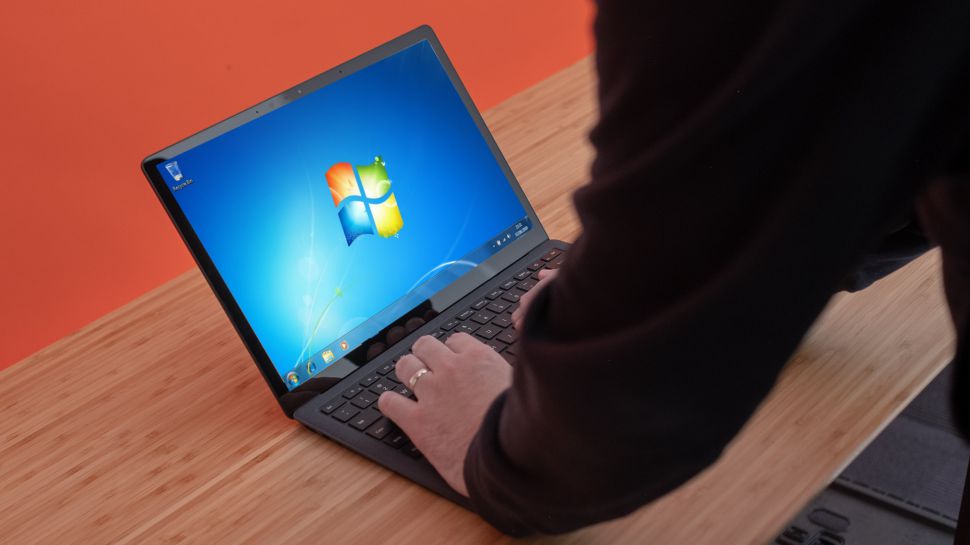Apple's new Liquid Glass design puts the spotlight on skeuomorphism for the first time since iOS 6 – and I'm all for it

Apple has revealed the new software designs for iOS 26, iPadOS 26, macOS Tahoe 26, and other platforms, all of which are centered on a new digital ‘material’ called Liquid Glass.
The new design language, officially untitled but already referred to as ‘Liquid Glass’ by every fan and commentator on the web, was revealed during the WWDC 2025 keynote on June 9.
Though we had been expecting a visual refresh across Apple’s software platforms thanks to a bevy of iOS 26 rumors, it was still surprising to see the tech giant present such a modernized and unified design.
That said, as current and forward-thinking as Liquid Glass looks, I’m glad to see that this new design language actually brings back a much-loved trend from years past.
The return of skeuomorphism

Apple has always drawn from real-world items and phenomena to inform its digital design – it’s part of why the iPhone, iPad, and Mac feel so natural to use.
However, more than any update since iOS 6, Liquid Glass puts skeuomorphism at the center of Apple’s visual identity.
Skeuomorphism, or skeuomorphic design, is a visual style for digital interfaces that primarily uses real-world objects as references.
Sign up for breaking news, reviews, opinion, top tech deals, and more.
Looking at Liquid Glass, a few new examples of skeuomorphism leap out at me: the new Photos icon is a gorgeous design that mimics the appearance of layered stained glass, while the Camera app sees the return of the high-res lens illustration last seen in iOS 6.
Skeuomorphism was prominent in early iOS versions up to iOS 6. It informed the felt table backdrop of Game Center, the compass icon for Safari, and the literal bookshelves in the Books app. Many of these elements have lived on in some way or another in versions of iOS since then.

So, technically, Apple never stopped using skeuomorphic elements in its design – but by the time iOS 18, iPadOS 18, and macOS Sequoia rolled around, everything had become so flat and tiled that it could be more accurately called neumorphism, which refers to a blend of the two styles.
And of course, there’s the Liquid Glass ‘material’ itself, which – true to its name – uses the visage and properties of water and glass to create translucent overlays that not only pass through, but refract the light ‘sources’ underneath.
Here we see Apple taking skeuomorphism to another level, drawing from two references to create something that doesn't exist in daily life, resulting in the familiar wonder that defines Apple’s user experience (my colleague, Axel Metz, notes in a seperate article that "this new see-through, shape-shifting take on iOS is, if nothing else, a marvel of digital engineering").
Other influences

Though skeuomorphism has clearly played a large role in the development of Liquid Glass, it’s not the only influence on Apple’s new design language. In fact, it seems to me that Apple is responding to two other design trends with this overhaul.
The first likely influence is Frutiger Aero, an aesthetic most widely popularized by Microsoft’s Windows 7 – as such, I don’t expect Apple would ever admit to any link.
Frutiger Aero uses glass-like, transparent, and metallic textures alongside natural forms and imagery to create a bright and optimistic feel – if you ask me, that sounds a lot like Liquid Glass.

The second is a little more speculative. In the rounded corners, popping colors, and reflective highlights of the Liquid Glass design, I get a hit of the Y2K aesthetic that’s taken the world by storm in the last few years, as evidenced by everything from Gen-Z fashion to Spotify Wrapped.
Personally, I think it all comes together pretty well – though I’m of course keen to try out Liquid Glass myself before making any definitive judgements.
Be sure to keep up with our iPhone, iPad, and Mac coverage for the latest updates on Apple's latest software, and let us know what you think of Liquid Glass in the comments below.
You might also like

Jamie is a Mobile Computing Staff Writer for TechRadar, responsible for covering phones and tablets. A lifelong tech-obsessive, Jamie began his writing career as a music blogger before studying journalism at Goldsmiths College, and joined TechRadar in 2024. He thinks the iPhone 5S is the greatest phone of all time, but is currently an Android user.
As well as reporting on the latest in mobile hardware, software, and industry developments, Jamie specialises in features and long-form pieces that dive into the latest phone and tablet trends. He can also be found writing for the site's Audio and Streaming sections from time to time, or behind the decks as a DJ at local venues around London.
You must confirm your public display name before commenting
Please logout and then login again, you will then be prompted to enter your display name.